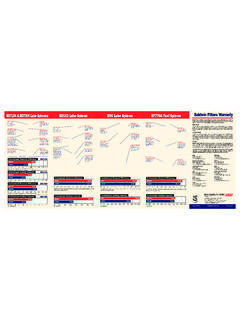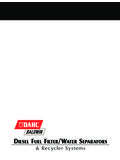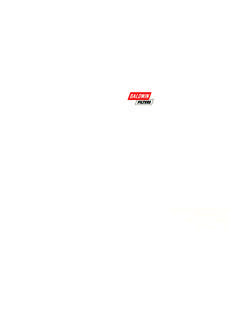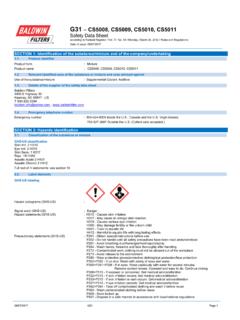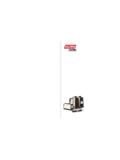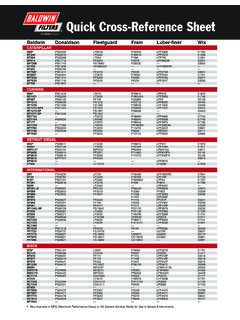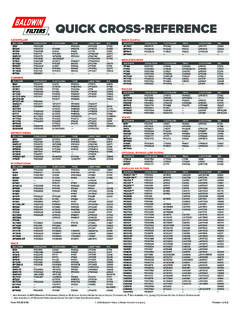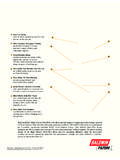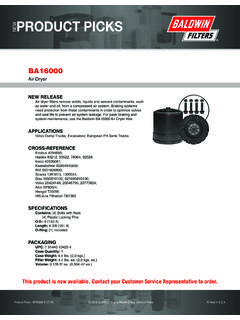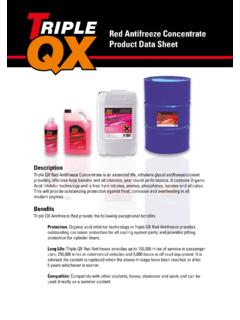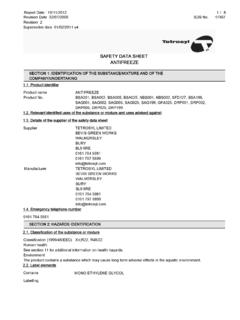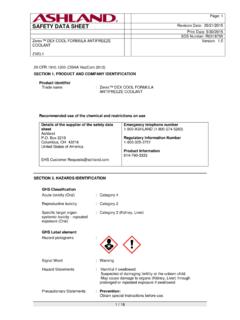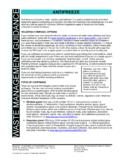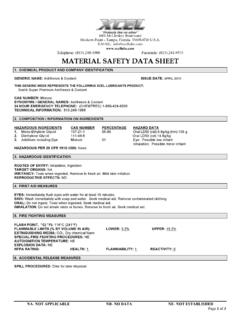Transcription of The Color of Antifreeze - Baldwin Filters
1 Revised Apr. 2010 Page 1 Technical Service Bulletin 05-2R1 The Color of Antifreeze Until recently, the Color of the most commonly used antifreezes for both light duty and heavy-duty engine cooling systems was predominately green. Its change interval is normally about every two years or 30,000 miles (50,000 km) of use. Then, long life (LLC) / extended life coolant / Antifreeze was introduced in an effort to reduce maintenance costs, downtime and environmental disposal costs and issues. With the introduction of this totally new concept, Antifreeze manufacturers wanted to differentiate this new product from existing antifreezes. To accomplish this, they introduced different colored dyes for their LLC / extended life coolant products.
2 Orange and red dyes were used first; now it appears there may be virtually no limit to the different dye colors that may be used. The purpose of this bulletin is to describe the dye colors currently available, the chemical technologies being used and which vehicle manufacturers are using which technology based on the information that is readily available at the time this bulletin was published. The member companies of the FMC are confident this issue is not static and new technologies and dye colors will continue to be introduced in the future. Antifreeze is used in cooling systems to both lower the freeze point of water and raise its boiling point. It is also used as a carrier for different types of additives such as sodium silicate to protect aluminum from corrosion, anti-foaming agents and other corrosion inhibitors.
3 Although straight Antifreeze actually freezes and boils quicker than tap water, when mixed with water in the proper proportions (a 50% / 50% mix is ideal) in a cooling system, it greatly increases the cooling system's ability to perform its designed function of removing heat from critical engine parts and to enhance the service life of the various cooling system components. Inorganic Acid Technology (IAT) is the chemical composition for the traditional antifreezes that are green in Color . An IAT can be used with either ethylene glycol (EG) or propylene glycol (PG). The normal IAT service life is two years or 30,000 miles (50,000 km). Organic Acid Technology (OAT) was the first LLC / extended life coolant introduced in North America in 1994.
4 OAT Antifreeze had been widely used in Europe before its introduction in North America. OAT can be either EG or PG but Revised Apr. 2010 Page 2 is mostly EG based. Its first dye colors were orange and red. These dye colors are still used by General Motors and Caterpillar. Green, pink and blue have been added to the list of available OAT antifreezes. It is recommended that OAT not be mixed with any other Antifreeze technology. The normal OAT Antifreeze service life is 5 years or 150,000 miles (250,000 km). Hybrid Organic Acid Technology (HOAT) is a combination of IAT and OAT. Several manufacturers are using HOAT for their vehicles. One version is dyed orange and contains 10% recycled Antifreeze .
5 Another version is dyed yellow and does not contain any recycled Antifreeze . Both of these HOAT antifreezes use the marketing designator of GO-5. They are compatible with each other but mixing them with IAT or OAT is not recommended. The normal HOAT Antifreeze service life is 5 years or 150,000 miles (250,000 km). Nitrited Organic Acid Technology (NOAT) is an OAT with nitrite added. This makes NOAT also suitable for use in both light duty and heavy duty systems. NOAT and HOAT are very similar in performance characteristics. The normal NOAT service life varies greatly. Since Antifreeze is clear when it is manufactured, and water is clear, dye is used to Color the Antifreeze for identification and marketing purposes.
6 The Color of Antifreeze is no longer an accurate indicator as to whether it is an IAT, OAT, HOAT or NOAT formulation. Further, some Antifreeze manufacturers market a universal Antifreeze they say is compatible with all OAT, HOAT and NOAT formulations. These "universal" formulas are not for use with IAT and they will not convert an IAT to an LLC/extended life coolant Antifreeze . Mixing IAT with OAT, HOAT or NOAT antifreezes will not damage your vehicle s cooling system; however the mixture will negate the long life/extended life attributes of these formulations. In conclusion, there are a variety of colors available, including oranges, reds, greens, yellows, blues, clear and pink dye colors.
7 With this variety of dye colors and more to come, the service technician s ability to properly service and maintain light duty and heavy duty cooling systems properly will be greatly challenged. It is imperative the technician be fully aware of what the vehicle manufacturers' requirements for Antifreeze are and those recommendations be carefully followed. For further information regarding cooling system maintenance, refer to TSB's 88-1, 89-1, 97-2 and 02-1. For additional information, contact: filter Manufacturers Council Box 13966 Research Triangle Park, NC 27709-3966 Phone: 919/549-4800 Fax: 919/549-4824 Administered by Motor & Equipment Manufacturers Association
